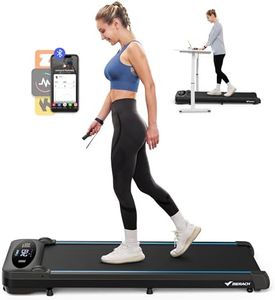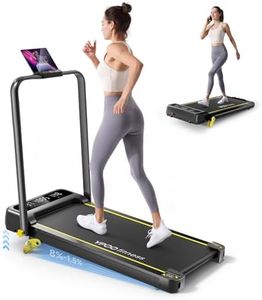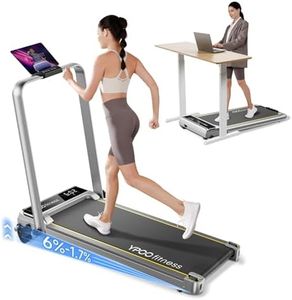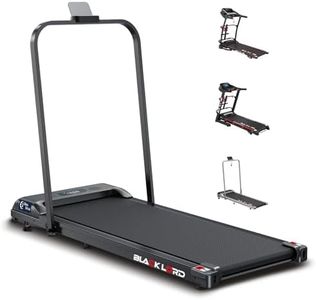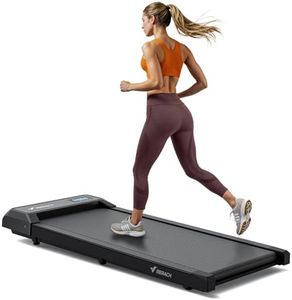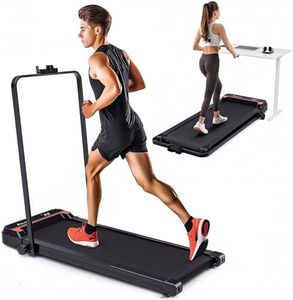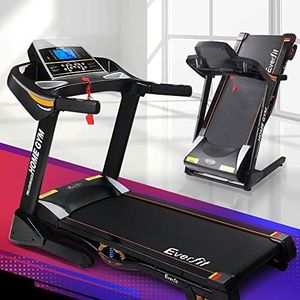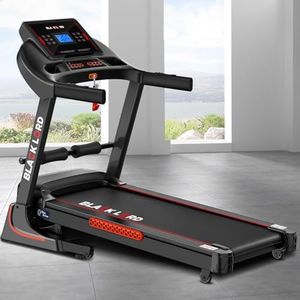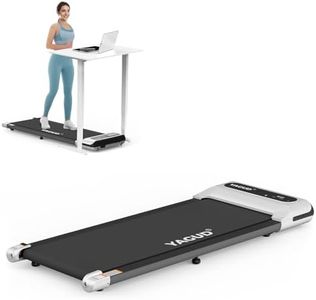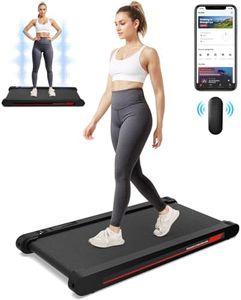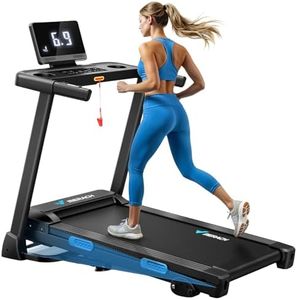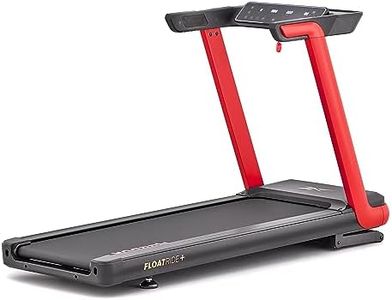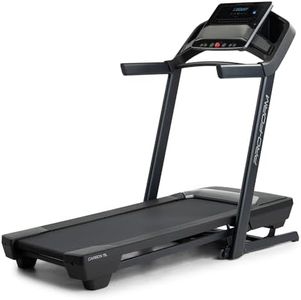We Use CookiesWe use cookies to enhance the security, performance,
functionality and for analytical and promotional activities. By continuing to browse this site you
are agreeing to our privacy policy
10 Best Foldable Treadmill
From leading brands and best sellers available on the web.Buying Guide for the Best Foldable Treadmill
Choosing a foldable treadmill can be an excellent way to bring exercise into your home without sacrificing space. Before purchasing, think about your fitness goals and the space available. Consider how often you'll use the treadmill and whether it needs to be moved or stored frequently. Identifying what's most important to you—such as quiet operation, ease of folding, weight capacity, or built-in programs—will help you find a treadmill that's a good fit for your lifestyle.Folding MechanismThe folding mechanism determines how easily the treadmill can be collapsed and stored when not in use. There are manual and hydraulic (or assisted) options. Manual folding requires physical effort and may be less convenient if you plan to fold the treadmill often, while assisted systems usually let the treadmill fold gently and lock safely. If you'll be storing the treadmill after every use, a smooth and simple folding mechanism will be essential for convenience and safety.
Motor PowerMotor power, usually measured in horsepower (HP), shows how strong the treadmill’s engine is. A higher HP means the treadmill can handle higher speeds and heavier users more smoothly. For walking, lower HP (around 1.5–2.0 HP) may be enough; for jogging, look for 2.0–2.5 HP; and for running, something 2.5 HP or above provides more reliable performance. Think about your primary use—casual walks require less power, while frequent running calls for a stronger motor.
Running Belt SizeThe size of the running belt affects walking or running comfort and safety. Belt length from about 40 to 55 inches supports walking, while runners or taller users may need belts 55 inches or longer to avoid stepping off the track. Widths commonly range from 16 to 20 inches—wider belts give more room for shaky stepping or running strides. Consider who will use the treadmill and whether you want space to move freely.
Weight CapacityWeight capacity is the maximum user weight the treadmill can safely support. Most home treadmills range from 200 to 300 pounds, but some more robust models go higher. Choose a treadmill with a capacity at least 15–20% above your own weight to ensure longer lifespan and safe operation, especially if multiple people will use it.
Speed RangeSpeed range shows how fast the treadmill can go, with most folding models offering 0.5 up to 8–10 mph. Walkers may never need top speed, but joggers should look for models with at least 8 mph, and runners will want a maximum closer to 10 mph or more. Consider your workout style and whether you plan on fast-paced workouts.
Incline OptionsIncline features allow you to adjust the slope of the running surface for a more challenging workout. Some foldable treadmills have manual incline settings you must set before starting, while others offer automatic (motorized) incline with the push of a button. If you want variety and more intense workouts, seek models with adjustable incline—manual is fine for infrequent changes, but automatic is ideal for frequent, mid-workout adjustment.
Display Console and ProgramsThe display shows workout data like time, speed, distance, and calories burned. Some consoles are basic, showing just the essentials, while others include built-in workout programs, Bluetooth connectivity, or compatibility with fitness apps. Decide whether you want simple tracking or interactive features to keep you motivated and track your progress.
Noise LevelNoise level measures how loud the treadmill is during use. This is particularly important if you’ll be running early in the morning, sharing a home with others, or living in an apartment. While quieter treadmills often have better construction and cushioning, be mindful of user reviews mentioning noise if this is a concern for you.
PortabilityPortability refers to how easy it is to move the treadmill around. Features like transport wheels and lighter overall weight can make a big difference if you’ll be regularly moving the treadmill from storage to workout areas. Consider your living situation and whether the treadmill will stay in one place or need to be shifted after each use.
